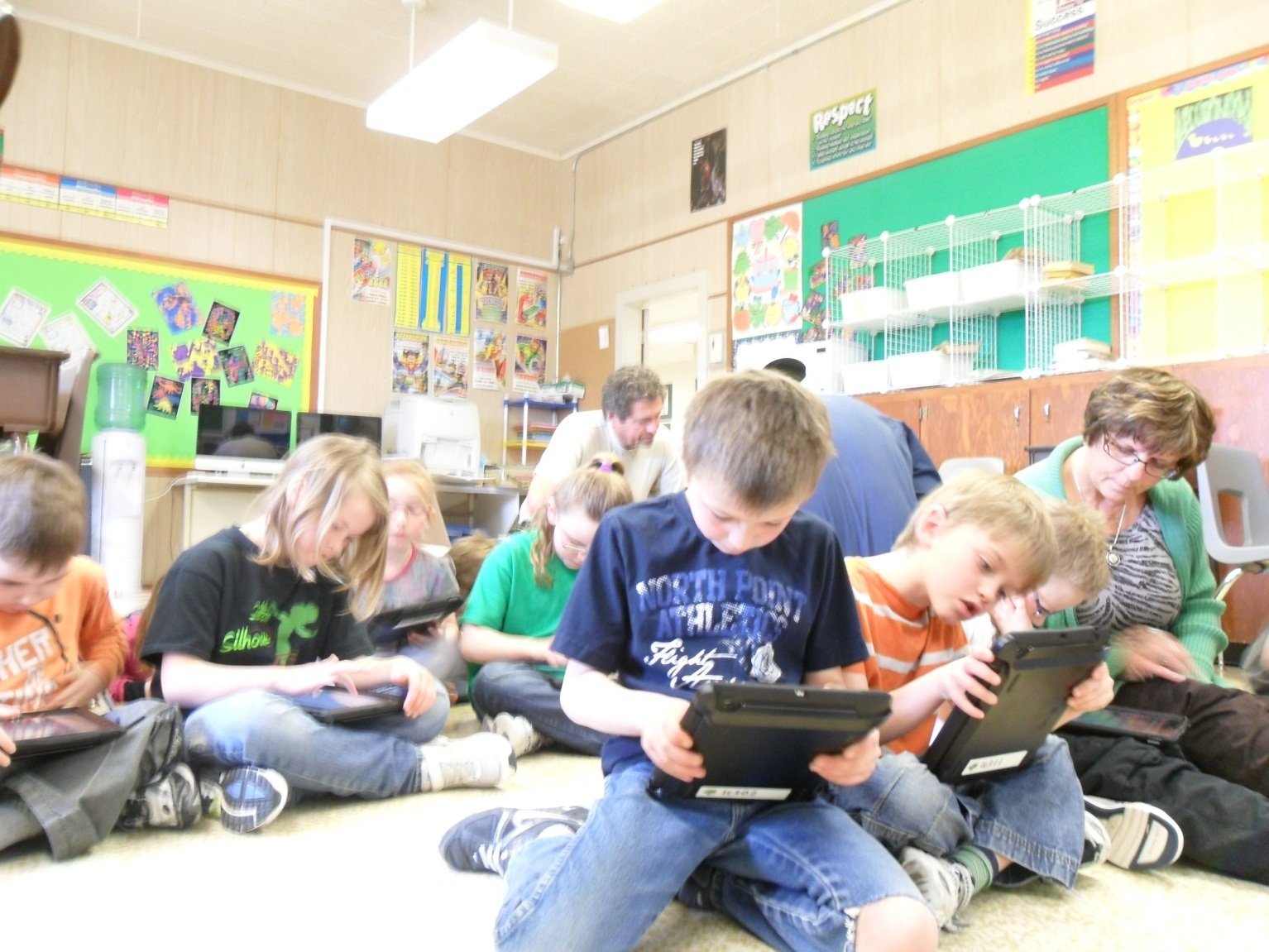With all other aspects in
life, there are risks and benefits to a 1:1 initiative. I have tried to compile
a list from my various sources. I always like to hear the bad news first, so we
will start with risks.
Risks
Let's
face it, kids are forgetful. Students are going to forget to bring their tablet
to school. They will forget a few times. Now what do we do? One suggestion I
found was creating a buddy system for those who forget or who have their tablet
or laptop out for repair. Many schools must have an extra supply of tablets or
laptops for those students who move in. Each teacher could have two backups
with the general apps that the student could use in the event they do not have
one. (Corn et al., 2010)
Students whose families have declined to have a tablet or laptop at home
can use one at school, and download the materials needed to finish the work at
home. A policy must already be in place for students who do not have internet
access, so they would be working as though they were in this group.
Another risk would be virus' attacking the tablet or laptop while the
students are connected online off school grounds. Many systems will only
protect the device while logged into to the school server. The technology
solution team should be able to create a system that will extend protection to
the device, even when students are off school grounds.
 Discipline policies must be strictly followed by each staff member.
Enforcing rules and polices will help students keep on track and not stray when
they are working. We are all guilty of checking Facebook or e-mail in the
middle of lesson planning, I know I am. At an elementary level, students could
stray off topic by switching to a game or searching online. Students should be
taught that school is not the place for these actions, unless directed to do so
by the teacher. Corn (et al) suggests that the best way to keep students
from disobeying the policies is to contact parents and report inappropriate
behaviors.
Discipline policies must be strictly followed by each staff member.
Enforcing rules and polices will help students keep on track and not stray when
they are working. We are all guilty of checking Facebook or e-mail in the
middle of lesson planning, I know I am. At an elementary level, students could
stray off topic by switching to a game or searching online. Students should be
taught that school is not the place for these actions, unless directed to do so
by the teacher. Corn (et al) suggests that the best way to keep students
from disobeying the policies is to contact parents and report inappropriate
behaviors.
Sites
that are blocked at school are not blocked when the student logs into the
internet at home. This is where a parent contract/home use policy comes to
play. Parents should be informed about how the tablets are benefiting students
and what to expect with the tablet being at home. They need to be aware that
the sites that are blocked on school grounds are going to be available to
students when they are off campus. Parents have to be responsible for their
students' actions outside of school. Together, parents and staff can assist
students in navigating the internet safely and effectively.
Benefits
There
are many benefits in introducing a 1:1 education plan. In the studies done by
Bebell and O'Dwyer significant improvements in state test scores in English and
language arts have been shown. Teachers should treat their technology as a
cognitive tool rather than a technological tool. "Teachers play an
essential role in the effectiveness of 1:1 initiatives."(Corn et al.,
2010)
Differentiation is possible with 1:1 devices. Students learn in different
ways and at different speeds. One teacher can differentiate student learning
easier when everyone has their own device. When a student can go their own
speed, they are more likely to grasp concepts and build upon their prior
knowledge.
In
the real world, students will be expected to use technology in their job field.
Learning the basics will help them be prepared for whatever their future
employer expects. Technology is taking over in companies, large and small.
Schools are supposed to preparing students for the future. We might as well
integrate technology where ever we can to prepare them now.
 Students are "in to" electronics. Anywhere I go, I see people
using electronic devices. Children are being entertained, teens are
communicating and listening to music, and adults are doing the same activities.
Learning can become more interesting and engaging when students are able to use
technology. This is how they are interacting outside of school, they might as
well use it productively inside of school!
Students are "in to" electronics. Anywhere I go, I see people
using electronic devices. Children are being entertained, teens are
communicating and listening to music, and adults are doing the same activities.
Learning can become more interesting and engaging when students are able to use
technology. This is how they are interacting outside of school, they might as
well use it productively inside of school!
Digital materials available online are endless!! There are so many great
resources students can have access to with just a couple of clicks! If there is
a series of books that students are interested in, they can look them up online
and generally find them.
Test
scores are rising with the introduction of tables and laptops in classrooms.
Literacy rates are rising drastically! I would have never learned how to type
if it were not for wanting to chat with my friends after school. The same type
of situation is used when students are using technology. They want to learn to
read and read better because they want to figure out what the App is asking
them to do.
Students will learning difficulties have a vast amount of access to Apps
that can assist them. From dyslexia apps to text to speech apps, learning with
technology can improve learning and wanting to learn for all types of students.
























